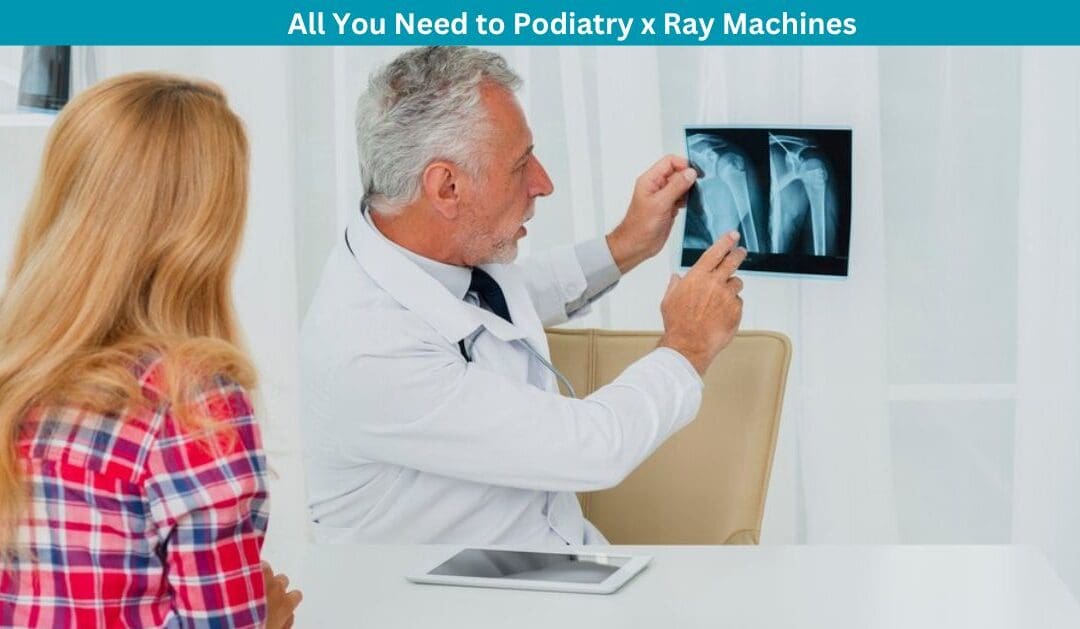Podiatry x machines are used to capture images of foot and ankle so that they can be treated maticulously. Podiatry x-ray mahcines allow doctor to see and analyze foot and ankle in great detail.
Podiatry x-ray machines are usually deivced into two types one is desktop and second is portable.
What are podiatry X-ray desktop and portable equipments?
Desktop podiatry equipments are fixed at one place or location and you might have seen these desktop eqiupments in hospitals. On the other hand, portable x-ray equimpents can be moved easily from one place to another easily.
Features of Podiatry X-ray Systems
- High Resolution:
- These are x-rays systems provide detailed images that really helpful health professtionals to digonose fractrures and other foot related conditions.
- Adjustable Imaging Angles:
- Utility: Allows for various projections (AP, lateral, oblique) essential for comprehensive evaluation of foot structures.
- Portable Options:
- Benefit: Some systems are designed to be portable for use in different settings, including clinics, hospitals, or patient’s homes.
- Reduced Radiation Dose:
- Advantage: Modern systems are designed to minimize radiation exposure while maintaining image quality, crucial for frequent imaging, especially in pediatric or diabetic patients.
Applications in Podiatry
- Diagnostic Imaging:
- Fractures and Trauma: Identifying and assessing bone fractures, dislocations, and trauma-related injuries.
- Arthritis: Evaluating joint changes associated with arthritis.
- Infections: Detecting signs of osteomyelitis or other infections.
- Bone Deformities: Assessing congenital or acquired deformities like bunions or hammertoes.
- Pre-operative Planning:
- Surgical Guidance: Assisting in planning the correction of deformities or other surgical interventions.
- Post-operative Evaluation:
- Healing Assessment: Monitoring the healing process after surgery or injury.
- Routine Screening:
- Diabetic Patients: Regular screening for complications in diabetic patients, such as Charcot foot or ulcers.
Advances in Podiatry X-ray Technology
- Digital Tomosynthesis:
- Technology: Creates sectional images from a series of low-dose X-rays, providing a 3D-like view that can enhance diagnostic accuracy.
- Dual-Energy X-ray Absorptiometry (DEXA):
- Application: Though commonly used for bone density measurements, in podiatry, it helps assess bone health in the foot, especially in cases of osteoporosis or metabolic disorders.
- Integration with Advanced Software:
- AI and Machine Learning: Enhanced software can assist in detecting subtle abnormalities and automating measurements, improving diagnostic efficiency.
- Mobile and Handheld Systems:
- Flexibility: Developments in mobile X-ray units enable more accessible imaging for patients with limited mobility or in various clinical settings.

